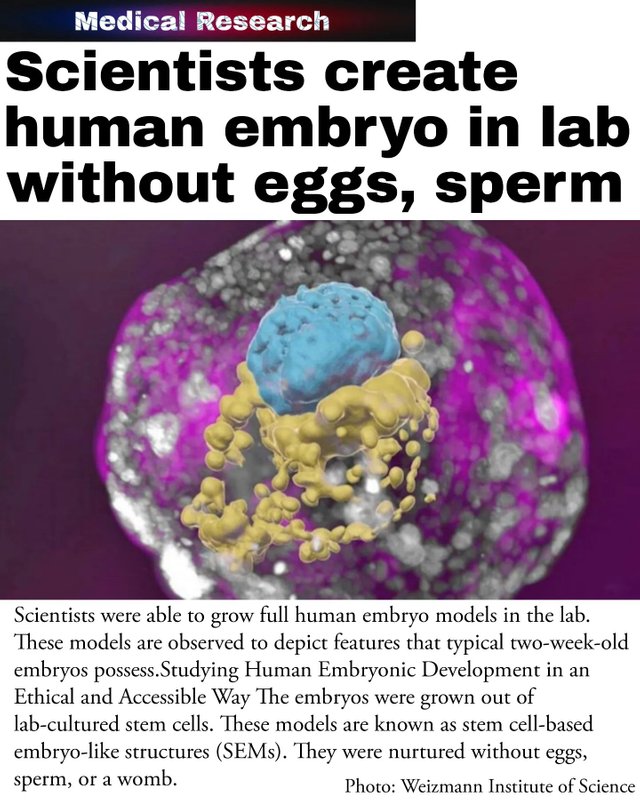While there are several ethical and technical issues that surface regarding study efforts to look into the crucial stages of development of the human embryo, these SEMs could offer an accessible and ethical method of looking into this, specifically the first month, molecular geneticist Jacob Hanna from Israel's Weizmann Institute of Science explains.
The global research team was able to coax genetically undifferentiated and unmodified stem cells from humans and turned them into structures that mirror embryonic development in humans.The process exhibits human stem cells' remarkable capacity to self-organize. It expands recent breakthroughs in embryonic-like stem cell generations to offer researchers a new way to look into the phenomena.
Lab-Grown Human Embryos
The embryo models hold vital features that have not been observed in earlier models. These include three different lineages that facilitate embryonic support structures as well as the placenta. It also includes cell layers that form into an embryo prior to folding and that grow into various organs and tissues.
Hanna and the team explain in their study that they extend such findings to a human context with the help of genetically unmodified human embryonic stem cells.
The researchers pinpointed ideal conditions, such as cell mixture ratios and cell numbers, starting from implantation that takes place roughly seven to eight days post-fertilization. As such, they explain that the full SEMs exhibited dynamics in developmental growth that mirror the hallmarks of embryogenesis' post-implantation phase around 13 to 14 days after fertilization.
#lab #sperm #egg #fertility #embryo #stemcell #cell #research #human #organs #tissus

This is a true breakthrough in cell science.
Downvoting a post can decrease pending rewards and make it less visible. Common reasons:
Submit